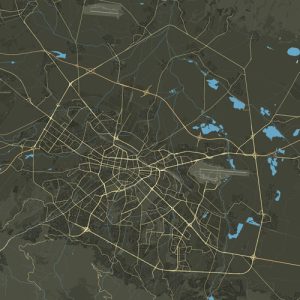The name of the cave comes from the two brothers – Saye and Seyu, who hid in it from the Turks during slavery. Its entrance is under a rock slope, six and a half meters high, overgrown with ferns and mosses. The length of Saeva Dupka is 400 meters, and the year-round temperature ranges from 7 to 11 degrees Celsius. It is thought to have formed about 3.5 million years ago. It was studied for the first time in 1883 by Professor Zlatarov, and 10 years later the Shkorpil brothers followed his example. In 1963, Saeva Dupka was declared a natural landmark, and in 1967 – landscaped. Today it is secured and very well lit. With skill and taste, the designers and builders have achieved this without compromising its inherent romance and mystery. Animal bones, pottery and even coins from the time of the Roman Empire were found in it.
The cave consists of five halls. The first of them is called Kupena. With a length of 50 meters and a width of 19 meters, oriented in the east-west direction, it is relatively poor in formations. It got its name from the 3.5 meter high cascading stalagmite resembling a haystack.
The second hall, the Collapse, takes its name from the blocks that fell from the ceiling, possibly from an earthquake that occurred centuries ago. To the right of the path is the remarkable stalacton called “Fat Bertha”, which really looks like a large cannon. The small stalactites on the ceiling resemble petrified rain, and on the south wall of the hall, a careful eye can spot a female figure, often likened to the expectant mother of the poet Dimcho Debelianov. At the western end are the stone strings called the Organ of the Cave. On the northern wall we see a petrified waterfall, and at the westernmost end is the stalagmite called the Minaret.
The third hall is called Harmana, probably because it is flat and almost circular, measuring 41 by 40 meters. The thickest stalacton of the cave immediately catches the eye – with a height of 4.5 meters and a circumference of 13 meters. Its northern side sparkled as if sprinkled with frost or precious stones. This is the reason why it is also called Brilliant.
Harmana’s acoustics are remarkable, so many choirs have sung here. In this hall you can also see the only “helictites” in Bulgaria. These are inclined stalactites. The reason for this is the constant air flow, which diverts the direction of the water drops to the side
North-west of Harmana is the White Castle hall.
With more imagination, one can distinguish in it a petrified elephant, a lion, an eagle, the chained Prometheus, maces, elephant ears, marble columns, Khan Kubrat and his wife, canopies.
The most impressive formation in this hall is a huge stalacton that really resembles a medieval castle. The last hall is called Cosmos – because of the formation that successfully resembles a rocket in flight. Intricately shaped stalagmites rise from the floor. One of them really looks like a mother with a child in her arms, others resemble the Kremlin Palaces, and still others resemble the Belogradchik Rocks. The silhouette of a petrified frog can also be seen.
Saeva Dupka is a fairy-tale world created by stalactites, stalagmites and stalactons of various shapes and sizes, painted in all possible color shades, which fully justifies the flattering name of this cave – the “Underground Pearl” of Bulgaria.
Entrance fees:
– up to 6 years – free
– 2+ Family ticket – BGN 15
– over 18 entrance fee – BGN 10
– Donor ticket – for BTS donors.
Contacts:
excursion guides – 0888/ 864-187

